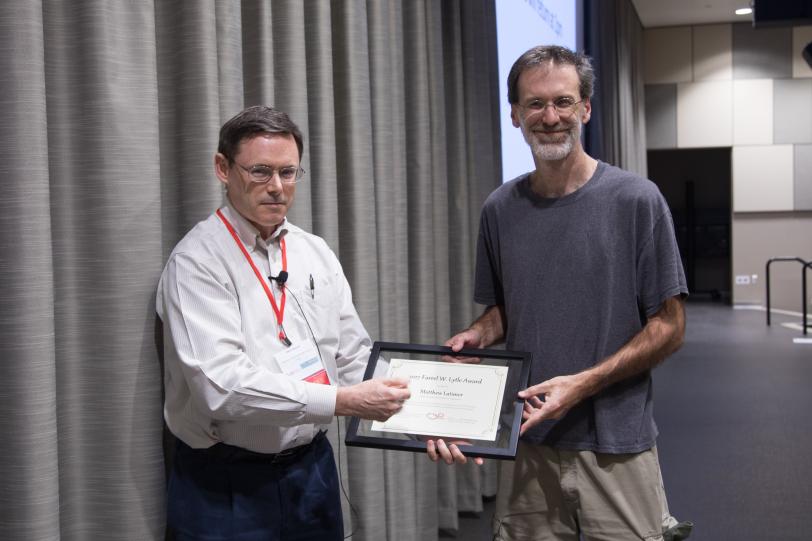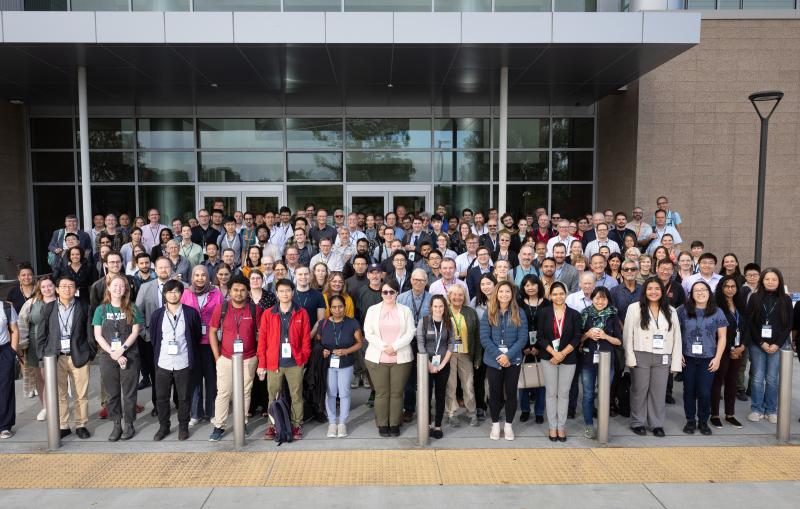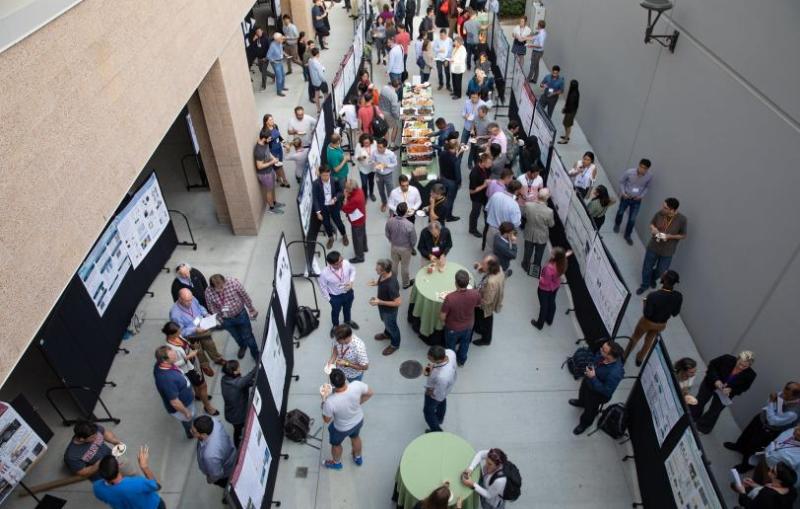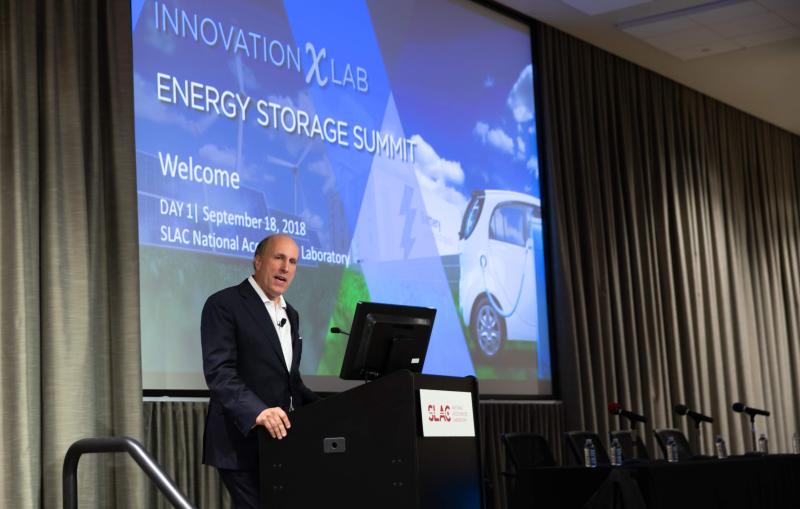Matthew Latimer Receives 2017 Lytle Award
The X-ray scientist is honored for 20 years of beamline and instrumentation design, operation and scientific support at SLAC’s synchrotron.
By Amanda Solliday
Matthew Latimer first visited the Stanford Synchrotron Radiation Lightsource (SSRL) on a tour as an undergraduate chemistry student more than 20 years ago.
“As a student, I remember being impressed by the ‘big science’ that was happening at SLAC,” Latimer said. “But I also thought, ‘This is great, but as a chemist, I’m never going to have anything to do with particle accelerators.’”
Now a staff member at the Department of Energy’s SLAC National Acceleratory Laboratory, Latimer is in charge of seven spectroscopy beamlines at SSRL. He was recently selected for the 2017 Farrel W. Lytle Award, established by the SSRL Users’ Organization Executive Committee. The award promotes accomplishments in synchrotron science and supports collaboration among visiting scientists and staff who conduct research at SSRL.
Twenty-five colleagues and visiting researchers at the synchrotron submitted statements of support for Latimer to receive the award. They cited his ability to successfully execute experiments, his helpful, good-natured and humorous reputation, and his assistance with nearly every research and technical group at SSRL.
“I was really happy to earn the award, and I’m proud of the research we’ve supported and enabled as a group at SSRL. Because it comes from the SSRL community, the award is a nice validation of an accumulation of work,” Latimer said.
The committee presented the award to Latimer at the 2017 SSRL/LCLS Annual Users' Meeting, held recently at SLAC.

Sold on X-ray Science
After earning his PhD in chemistry from the University of California, Berkeley, Latimer began work at the synchrotron as a postdoctoral researcher.
“When I came to SSRL, I started working on a new beamline to help get it up and running. And then I was able to help other scientists begin research there, as well,” Latimer said. “It was my first taste of enabling others to do experiments, and that sold me on X-ray science.”
Farrel Lytle, whom the award is named after, was one of the visiting researchers Latimer has supported as an SSRL beamline scientist. Lytle is a former Boeing researcher known for his pioneering contributions to X-ray spectroscopy, and he began conducting experiments at SSRL during the 1970s.
"I am particularly pleased when someone I know and admire receives the award," Lytle wrote in the award letter sent to Latimer.
Latimer’s graduate research at SSRL focused on the chemistry that divides water into oxygen and hydrogen during photosynthesis. Over the decades, his scientific interests began to broaden. After transitioning from research to instrument development and user support, Latimer’s work expanded to help users in X-ray spectroscopy across a wide spectrum of chemistry, biology and materials science.
“To me, the experiments that happen here are a minor miracle,” Latimer said. “When you’ve been here this long, you learn a lot and see a lot of tremendously useful science.”
He added, “Anyone who gets the chance to work with a big crazy machine that accelerates electrons and shoots out X-rays should definitely do it.”
SSRL is a DOE Office of Science User Facility.
For questions or comments, contact the SLAC Office of Communications at communications@slac.stanford.edu.
SLAC is a multi-program laboratory exploring frontier questions in photon science, astrophysics, particle physics and accelerator research. Located in Menlo Park, Calif., SLAC is operated by Stanford University for the U.S. Department of Energy's Office of Science.
SLAC National Accelerator Laboratory is supported by the Office of Science of the U.S. Department of Energy. The Office of Science is the single largest supporter of basic research in the physical sciences in the United States, and is working to address some of the most pressing challenges of our time. For more information, please visit science.energy.gov.





